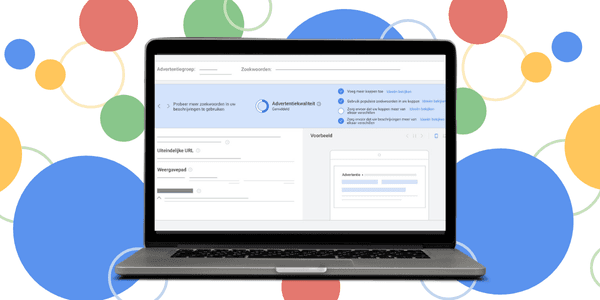You are looking for a plumber and see exactly that in the first line of the advertisement. Then it follows: 'Available 24/7'. Or you are searching for a turntable and immediately see at Best Buy that you can pick it up today. These recognizable, targeted advertisements often do not score 'excellent' according to Google's ad strength score (advertisement quality). And that is precisely why many advertisers wonder whether that score is actually relevant.
How Google Evaluates Ad Quality
Ad strength is intended as a guideline to make advertisements more relevant. According to Google, ads that improve from 'poor' to 'excellent' can yield an average of 12% more conversions. To achieve this, you should follow their recommendations by using as many unique, unpinned headlines as possible and incorporating popular keywords, preferably through dynamic insertion. However, there is a downside to this approach.
The practice deviates from Google's recommendations.
Advertisers like Sweetwater, Nike, and Best Buy pin headlines to fixed positions. This keeps the advertisement relevant and recognizable. Google disapproves of this approach because pinning limits the dynamics. However, audits show that when all headlines are free-floating, often combinations arise that come across as forced or robotic. The advertisement feels less human, less relevant – and this leads to higher costs per click.
Data analysis: average ad quality scores the highest
Based on 3,660 campaigns, it appears that ads with an average or good score perform the best. Ads with a poor or even excellent score showed worse results. The reason? Fully personalized headlines without guidance can undermine the relevance of the ad, which in turn leads to a lower Quality Score and higher CPCs.
Impact for businesses and marketers
Those who unthinkingly strive for an 'excellent' label risk higher costs and lower click-through rates. Especially in campaigns without a brand name – where relevance is crucial – it pays to be strategic. Practice shows that human insight and control are more effective than a blind leap of faith into machine learning.
Solution: balance between guidelines and reality
Pin headlines with important keywords. Use dynamic insertion where appropriate, but maintain control over the message. Analyze your data in the Ads reports yourself. Combine ad strength as a guideline with actual performance indicators such as ROAS, CPC, and CTR.
Those who let data guide them, rather than blindly following Google's recommendations, ultimately achieve better results. And if that yields an 'average' score, it might just be exactly what you need.

